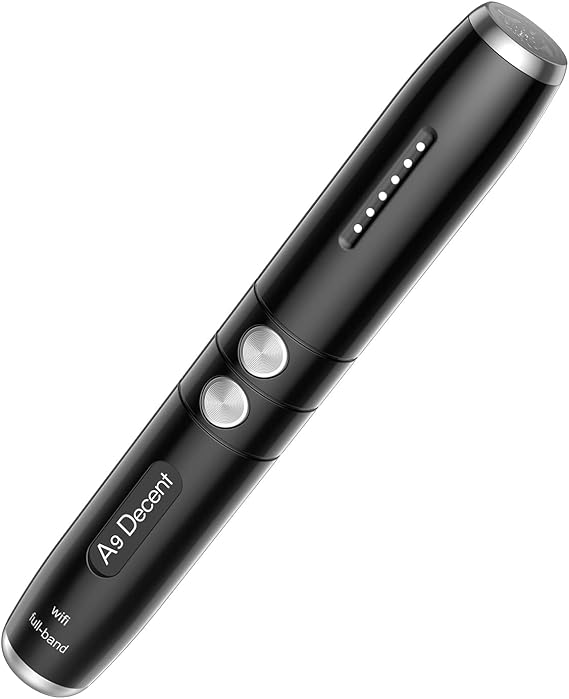The creeping feeling of being watched, the unsettling suspicion that someone might be secretly recording you – it’s a fear amplified in our increasingly interconnected world. The rise of miniaturized cameras and readily available surveillance technology has made hidden cameras a genuine privacy concern. Luckily, technology is fighting back. AI-powered hidden camera detectors are emerging as a critical tool in the fight to reclaim our privacy, promising a future where unseen surveillance becomes harder, if not impossible, to deploy.
Understanding the Threat of Hidden Cameras
Hidden cameras can take many forms, ranging from innocuous everyday objects like pens, clocks, and power adapters to more sophisticated devices cleverly disguised within walls or furniture. These cameras can be used for nefarious purposes, from voyeurism and blackmail to corporate espionage and identity theft. The sheer number of potential hiding places and the increasing sophistication of these devices make detection incredibly difficult – and that’s where AI-powered detectors come in.
How AI-Powered Detectors Work: Beyond Simple Infrared Detection

Older methods of detecting hidden cameras often relied on infrared (IR) detection, identifying the faint heat signature emitted by the camera’s lens. While effective for some cameras, this method is easily circumvented by cameras equipped with IR filters or those cleverly concealed within objects that radiate similar heat. AI-powered detectors offer a significant improvement, utilizing sophisticated algorithms to analyze multiple data points for a more comprehensive detection.
These AI algorithms typically analyze:
- Visual cues: The detector’s camera analyzes the scene for unusual reflections or anomalies that might indicate the presence of a lens. Sophisticated algorithms can identify subtle distortions in light, even in challenging environments with varying lighting conditions.
- Wireless signals: Many hidden cameras transmit data wirelessly, and the detector can scan for unusual Wi-Fi or other wireless signals that deviate from the expected environment. This helps identify cameras connected to networks or transmitting data.
- Electromagnetic fields (EMFs): The detector uses sensors to measure subtle variations in electromagnetic fields. Active cameras emit small EMF signals that can be detected with sensitive equipment and algorithms that identify patterns associated with camera operation.
- Data processing and pattern recognition: The heart of the AI system is its ability to learn and adapt. Through machine learning, the algorithms become increasingly effective at identifying hidden cameras, even those disguised in unconventional ways or employing anti-detection technologies.
Features to Look for in an AI-Powered Hidden Camera Detector

The market for hidden camera detectors is rapidly expanding, offering a wide range of options. When choosing a detector, consider the following features:
- Multiple detection methods: A detector employing a combination of visual, wireless, and EMF detection offers the most comprehensive coverage.
- Accuracy and sensitivity: Look for detectors with a high accuracy rate and the ability to detect cameras even at a distance.
- User-friendliness: An intuitive interface and easy-to-understand results are essential for non-technical users.
- Portability: If you need to scan a large area, choose a lightweight and portable detector.
- Software updates: Regular software updates are crucial for maintaining accuracy and adapting to new camera technologies.
Comparison with Traditional Methods and Competitors
Compared to traditional methods like manual visual inspection or simple IR detectors, AI-powered detectors offer far superior accuracy and broader detection capabilities. Many competitors in this space offer similar core functionality, but they differ in accuracy, ease of use, and specific detection methods. Researching specific models and reading user reviews will help you make an informed decision. Factors like the detector’s scanning range, battery life, and the level of detail provided in its results are crucial for comparison.
Practical Advice for Users

Even with an AI-powered detector, thoroughness is key. Remember to:
- Scan systematically: Cover every nook and cranny of the area you suspect might contain a hidden camera.
- Vary your scanning approach: Change your position and angle while scanning to improve detection accuracy.
- Check unusual places: Remember that hidden cameras can be placed in the most unlikely locations.
- Use multiple detection methods: Combine your detector with other techniques, such as visual inspection, if possible.
- Stay informed: Keep up-to-date with the latest advancements in hidden camera technology and the capabilities of your detector.
The Future of Privacy: AI and the Fight Against Surveillance

AI-powered hidden camera detectors represent a significant step forward in safeguarding personal privacy. As technology advances, these devices will undoubtedly become even more sophisticated, accurate, and user-friendly, making it increasingly challenging for individuals to secretly record without detection. While the technology offers a powerful tool, it’s also crucial to remember that awareness and vigilance remain paramount. The future of privacy lies not just in technological solutions, but also in a collective understanding of the importance of privacy and responsible use of surveillance technology.
The ongoing development of AI in this domain highlights a larger technological arms race between surveillance and counter-surveillance. As hidden cameras evolve, so too will the technology designed to detect them, creating a dynamic landscape that requires constant adaptation and innovation.